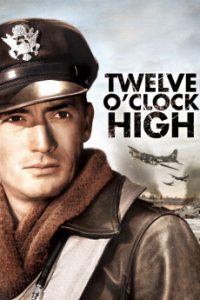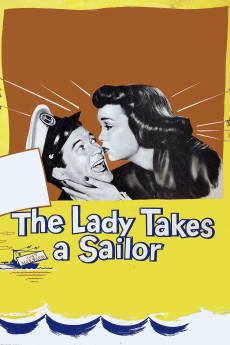

Twelve O’Clock High (1949) – Academic and Psychological Review
Plot Summary
Twelve O’Clock High (1949) is a war drama directed by Henry King and starring Gregory Peck. The film is set during World War II and follows the story of General Frank Savage, who is tasked with revitalizing a demoralized bomber group. The plot delves into the psychological and physical strains of aerial warfare and leadership challenges.
Characters and Acting
Gregory Peck delivers a powerful performance as General Frank Savage. His portrayal of a stern and determined leader is both compelling and nuanced. The supporting cast, including Hugh Marlowe as Lieutenant Colonel Ben Gately and Dean Jagger as Major General Pritchard, provide strong performances that add depth to the film’s character dynamics. Notable moments include Savage’s firm yet motivational speeches: “I’m asking you to put aside any personal feelings and just concentrate on doing your job.”
Direction
Henry King’s direction is masterful, effectively capturing the tension and intensity of aerial combat. His ability to convey the emotional and psychological toll of war on the characters is noteworthy. King’s direction ensures that the film maintains a gripping and realistic atmosphere throughout. This is evident in scenes such as the intense pre-mission briefings and the stark aftermath of combat missions.
Cinematography
Leon Shamroy’s cinematography is a standout element of Twelve O’Clock High. The use of aerial shots and close-ups effectively conveys the claustrophobic and perilous nature of bomber missions. The visual style enhances the storytelling, making the audience feel the high-stakes environment of the film. The aerial sequences, particularly the bombing runs, are visually striking and technically impressive for their time.
Music and Score
Alfred Newman’s score for Twelve O’Clock High is both haunting and stirring. The music underscores the film’s emotional beats and heightens the dramatic tension. Newman’s composition is integral to the film’s impact, providing an auditory reflection of the characters’ inner turmoil and the gravity of their mission. The score effectively complements the film’s somber and reflective tone.
Themes
Twelve O’Clock High explores themes of leadership, sacrifice, and the psychological effects of war. The film examines the burden of command and the moral complexities faced by those in leadership positions. It also delves into the concept of courage under fire and the resilience required to overcome adversity in wartime. One poignant dialogue highlights this: “We’re in a war, a shooting war. We’ve got to fight, and some of us have got to die.”
Screenplay and Dialogue
The screenplay, written by Sy Bartlett and Beirne Lay Jr., is tightly crafted and rich in character development. The dialogue is sharp and authentic, reflecting the vernacular of military personnel during World War II. The script effectively balances action scenes with introspective moments, providing a well-rounded narrative. Memorable lines like Savage’s reprimand, “Stop worrying about being liked and start worrying about being respected,” emphasize the film’s focus on leadership and discipline.
Special Effects
For a film made in 1949, Twelve O’Clock High features impressive special effects. The aerial combat scenes are particularly well-executed, with realistic depictions of dogfights and bombing runs. The practical effects used to simulate battle damage and explosions add to the film’s authenticity. These effects are seamlessly integrated, enhancing the realism without overshadowing the narrative.
Editing and Pacing
The film’s editing, overseen by Barbara McLean, is seamless and maintains a steady pace. The transitions between intense combat scenes and quieter, character-driven moments are smooth, ensuring that the audience remains engaged throughout. The pacing allows for both action and character development to coexist harmoniously, making the film both thrilling and emotionally resonant.
Production Design
The production design by James Basevi and Maurice Ransford effectively recreates the setting of a World War II bomber base. The attention to detail in the sets, costumes, and props contributes to the film’s historical accuracy and immersive quality. The authenticity of the production design enhances the overall viewing experience, providing a vivid backdrop for the story.
Historical Accuracy
Twelve O’Clock High is lauded for its historical accuracy. The film’s depiction of the strategies, equipment, and challenges faced by bomber crews during World War II is well-researched and realistic. The inclusion of actual wartime footage further adds to the film’s authenticity. This meticulous attention to detail makes the film a valuable resource for understanding the period.
Overall Impressions
Twelve O’Clock High is a powerful war drama that combines strong performances, skilled direction, and a compelling narrative. The film’s exploration of the psychological and moral dimensions of leadership in wartime is both profound and engaging. It stands as a classic example of the war genre, offering a thought-provoking and emotionally resonant experience. The film’s ability to capture the human side of military leadership makes it enduringly relevant.
Rating and Recommendation
Overall, I would rate Twelve O’Clock High 9 out of 10. The film’s strong performances, direction, and thematic depth make it a must-watch for fans of war dramas and classic cinema. I highly recommend it to those interested in exploring the psychological complexities of leadership and the impact of war. Its timeless narrative and character portrayals continue to resonate with audiences today.
Cultural Impact
Twelve O’Clock High has had a significant cultural impact, influencing both film and military training. The film’s realistic portrayal of leadership challenges and psychological stress has been used as a training tool for military officers. It has also inspired subsequent war films and television series, cementing its place in cinematic history. Its influence can be seen in its continued relevance in discussions about military leadership and ethics.
Genre Analysis
As a war drama, Twelve O’Clock High stands out for its focus on the psychological aspects of combat leadership. Unlike many war films that emphasize action and heroism, this film delves into the emotional and mental strain experienced by those in command. It offers a unique perspective within the war genre, highlighting the human side of military operations and the complexities of leadership.
Comparative Review
Compared to other war films of its time, Twelve O’Clock High is notable for its emphasis on character development and psychological realism. Films like The Best Years of Our Lives (1946) and Battleground (1949) also explore the human impact of war, but Twelve O’Clock High‘s focus on leadership sets it apart. Its realistic portrayal of the challenges faced by bomber crews provides a distinctive and compelling narrative.
Audience Reception
Twelve O’Clock High was well-received by audiences and critics alike upon its release. It was praised for its realistic depiction of wartime experiences and the strong performances of its cast. The film’s success at the box office and its enduring popularity attest to its impact and appeal. The critical acclaim and audience appreciation highlight its significance as a war film.
Narrative Structure
The narrative structure of Twelve O’Clock High is linear, following General Savage’s efforts to restore morale and efficiency within the bomber group. The film uses flashbacks to provide context and background, enhancing the storytelling. This structure allows for a thorough exploration of the characters’ development and the progression of their mission. The film’s pacing and structure effectively balance action with introspection.
Philosophical Analysis
Philosophically, Twelve O’Clock High explores themes of duty, sacrifice, and the burden of command. It raises questions about the morality of war and the ethical dilemmas faced by military leaders. The film’s portrayal of General Savage’s internal struggle reflects broader existential questions about leadership, responsibility, and the human cost of war. One of the film’s lines that encapsulates this philosophical depth is when Savage tells his men, “I’ve been on thousands of missions, and I can tell you, they never get easier.” This philosophical depth adds layers to the narrative, making it a rich subject for analysis.
Technical Analysis
From a technical standpoint, Twelve O’Clock High excels in its use of sound design and lighting. The sound effects during combat scenes are realistic and immersive, adding to the intensity of the film. The lighting is used effectively to create mood and atmosphere, particularly in scenes depicting the psychological strain on the characters. These technical elements enhance the film’s overall impact.
Subtext and Interpretation
On a deeper level, Twelve O’Clock High can be interpreted as a commentary on the psychological impact of leadership and the isolation it brings. The film’s depiction of General Savage’s journey reflects broader themes of resilience and the human capacity to endure hardship. The subtextual elements add layers of meaning to the film, making it a rich subject for analysis. It invites viewers to consider the deeper implications of command and the personal cost of leadership.
Director’s Previous Work
Henry King, the director of Twelve O’Clock High, was known for his work in various genres, including Westerns and dramas. His previous films, such as The Song of Bernadette (1943) and Captain from Castile (1947), showcased his ability to handle complex narratives and character-driven stories. Twelve O’Clock High is a testament to King’s versatility and skill as a director. His ability to blend action with deep character studies is evident in this film.
Literary Adaptation
Twelve O’Clock High is based on the novel of the same name by Sy Bartlett and Beirne Lay Jr. The film adaptation stays true to the source material, capturing the essence of the book’s themes and character dynamics. The screenplay effectively translates the novel’s exploration of leadership and psychological stress to the screen, making it a successful adaptation. The film’s fidelity to the source material enhances its narrative depth.
Full Academic Review
Twelve O’Clock High is a film that warrants thorough academic scrutiny due to its intricate depiction of leadership and psychological stress in a wartime context. The narrative, set during World War II, follows General Frank Savage, played by Gregory Peck, who is tasked with revitalizing a demoralized bomber group. The film explores the burdens of command, the moral complexities of leadership, and the psychological toll of war. Notable dialogue such as Savage’s assertion, “There’s nothing glorious about it. There’s nothing heroic,” encapsulates the film’s poignant commentary on the nature of courage and resilience under extreme pressure. From an academic perspective, the film is rich with themes related to military ethics, leadership studies, and psychological resilience, making it a valuable resource for scholarly analysis.
Full Psychological Review
The psychological dimensions of Twelve O’Clock High are central to its narrative. The film delves into the mental strain experienced by bomber crews and their leaders, highlighting the psychological challenges of war. General Savage’s transformation from a strict disciplinarian to a compassionate leader underscores the film’s exploration of leadership psychology. The stress, anxiety, and moral dilemmas faced by the characters are portrayed with remarkable depth, offering insights into the psychological impacts of combat. A significant line that reflects this psychological exploration is when Savage confides, “You can’t run a command on a basis of fear. It doesn’t work.” This makes Twelve O’Clock High a significant film for psychological analysis, particularly in understanding the mental health challenges faced by military personnel.
Historical Analysis
Twelve O’Clock High provides a historically accurate portrayal of World War II bomber missions. The film’s depiction of military strategies, equipment, and the daily life of bomber crews is well-researched and authentic. Historical accuracy is further enhanced by the inclusion of actual wartime footage. This attention to detail makes the film a valuable resource for understanding the historical context and realities of aerial combat during World War II.
Cultural Studies
From a cultural studies perspective, Twelve O’Clock High reflects the societal attitudes and values of its time. The film’s portrayal of leadership, sacrifice, and resilience resonates with the cultural ethos of the post-World War II era. It also offers insights into the ways in which war films of the period shaped public perceptions of military service and heroism. The cultural impact of the film extends to its influence on subsequent war dramas and its role in military training programs.
Film Theory
Applying film theory to Twelve O’Clock High reveals its sophisticated use of cinematic techniques to convey psychological and emotional depth. The film’s narrative structure, character development, and visual style can be analyzed through various theoretical frameworks, including psychoanalytic theory and auteur theory. Henry King’s directorial choices and Gregory Peck’s performance contribute to the film’s status as a classic, offering rich material for theoretical analysis.
Critics’ Reviews
Upon its release, Twelve O’Clock High received critical acclaim for its realistic portrayal of wartime experiences and strong performances. Critics praised the film’s depth, direction, and the authenticity of its depiction of military life. The film’s enduring popularity and continued critical recognition underscore its significance in the war film genre.
Genre-Specific Reviews
As a war drama, Twelve O’Clock High stands out for its focus on the psychological aspects of leadership in combat. This sets it apart from other war films that primarily emphasize action and heroism. The film’s nuanced exploration of the mental and emotional challenges faced by military leaders makes it a unique and valuable contribution to the genre.
Festival Reviews
Twelve O’Clock High has been showcased at various film festivals, where it has been lauded for its historical accuracy and powerful performances. The film’s festival screenings have contributed to its recognition as a classic, highlighting its impact and relevance in cinematic history.
Subtitles
For those interested in viewing the film with subtitles, you can download the subtitle file from the following link: Download Subtitles






